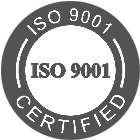The advent of data analytics and the change of preferences in how employees want their workplace have both significantly transformed the modern workplace, allowing businesses to make more informed and strategic decisions.
What is hype and what is not, though? How to really use data to make your workplace more efficient (and, ultimately, more inviting for your team?)
Cosmin Patlageanu, our CMO, had a discussion with Charlotte Laing, a CMO from Metrikus, a building efficiency platform with all the insights you need to make your workspace efficient, productive, and sustainable. Here are the main ideas they brought forward:
The Office Has Changed
The hybrid work model has become ubiquitous, prompting Human Resources and Facility Managers to enhance their understanding of workplace dynamics, including design, leasing, employee experience, and organizational culture. Truth be told, today's employees have high expectations for their workspaces; if these needs are not met, they may choose to work remotely instead of coming into the office.
As workplaces navigate this shift, organizations must find a balance that inspires employees while highlighting the importance of collaboration. The key, say Cosmin and Charlotte, lies in creating environments that foster both individual productivity and teamwork -- this way, companies can attract talent and retain engagement in a hybrid work setting.
Whose Task Is It to "Fight" the "Good Office at Home"?
The role of the workplace manager has evolved significantly to ensure a seamless workplace experience for everyone in the organization. In today’s collaborative environment, it’s essential for managers to unite various teams and foster a culture of teamwork.
In other words, simply sticking to the basics isn’t enough anymore; managers must be proactive in creating opportunities for collaboration and communication. However, we must all be aware there isn't a one-size-fits-all, straightforward answer as to who is responsible for this task, as it often requires a collective effort across different departments to truly enhance workplace synergy.
Data Makes the World Go Round -- And the Office Great Again
It's a data-driven world out there. And while this provides plenty of benefits for everyone, businesses often find themselves overwhelmed by the sheer volume of information available, which makes it challenging to access and utilize that data effectively.
This is where data analysts play a crucial role, helping organizations decipher and make sense of the information at hand. According to Charlotte and Cosmin, we might start seeing more data analysis specializing in workplace data -- and that's not a bad thing (at all.)
Cosmin and Charlotte also discussed the importance of real-time access to data -- an essential component for efficiency. Thanks to advancements in technology, tools now enable seamless communication of vital information as it happens. This not only streamlines operations but also enhances employee comfort.
For instance, by leveraging data, companies can identify preferences for work environments—like whether employees prefer to sit away from the air conditioning or near a window. Utilizing heat maps can further assist in creating a layout that allows everyone to choose their preferred workspace without conflicts.
To maximize these benefits, it’s important for Workplace Managers and Human Resources to collaborate closely. Together, they can ensure that the workplace is not only comfortable but also designed to boost productivity from various perspectives. By fostering a supportive environment that values employee preferences and leverages data effectively, businesses can enhance overall team efficiency and satisfaction.
How Personalized Can an Office Be These Days (Really)?
Balancing efficiency with employee experience is crucial for any organization. While it's important to ensure that employees are happy, it’s equally vital to manage costs effectively. Leveraging data can provide a broader understanding of workplace dynamics, helping leaders identify the best solutions tailored to their unique situations.
Trusting those responsible for workplace efficiency and experience is key. By allowing them the freedom to experiment with different approaches, organizations can discover what works best. For instance, rethinking traditional office layouts, like making the CEO's office more accessible, can foster a more open and collaborative environment.
Innovation doesn’t always have to be complex. Sometimes, simple changes can lead to significant improvements. Cosmin and Charlotte discussed a great example of how a narrow hallway connecting desks to the coffee machine encouraged employees to bump into one another, sparking spontaneous conversations and collaboration. Embracing flexibility and an open mindset can truly transform the workplace experience.
Occupancy -- The One Metric to Rule Them All
Our podcast episode also discussed occupancy, as one of the single most important workplace metrics to keep an eye on.
Measuring occupancy provides valuable insights that can lead to cost reduction and effective space optimization. By understanding how spaces are utilized, organizations can enhance the workplace experience for their employees.
This optimization not only improves employee satisfaction but also ensures a strong return on investment for technology implemented to gather and analyze this data. With these insights in hand, businesses can make informed, incremental changes that further enhance efficiency and productivity.
Should You Go With the Trends?
Whether we like to admit it or not, creating a supportive workplace culture goes beyond trendy perks like ping pong tables and pizza parties. While such offerings might appeal to some, particularly in a tech environment that values youthful enthusiasm and long hours, they aren’t a one-size-fits-all solution.
The essence of a thriving company culture lies in understanding the diverse needs and priorities of your team, especially in our post-2020 landscape where many have redefined their relationship with work.
It’s crucial to maximize the resources available to you, even if your workspace is limited. Consider how workplace customization can enhance employee satisfaction and productivity, providing a return on investment that benefits everyone. Leverage technology to streamline processes and prioritize what truly matters to your employees.
Additionally, actively seeking feedback is vital. Create channels for your team to share their thoughts and experiences, and ensure that you take meaningful action based on their input. This approach not only fosters a sense of belonging but also demonstrates that you value their contributions, leading to a more engaged and committed workforce.
Even more than that, make sure all of the feedback you collect translates into actual action points -- people will get tired really easily of answering your questions if they don't see the results of all this information-gathering.
Is the Future Data-Driven in the Workplace?
One thing's for certain: data is here to stay, and more and more businesses are being a lot more thoughtful about technology, how to use it and the data it provides, and how to make the most out of it. In uncertain times, "doing more with less" becomes paramount -- and good data can help you with that.
It can give you an extra layer of information, more insight, and it can keep you focused on what has the most impact on the bottom line.
And yet, as Charlotte puts it, success is all about balance -- in this case, the balance between learning how to better collaborate with each other (amongst departments, like HR, Facility Management, as well as the other teams in a business), and learning how to best use data to inform your decisions.
In the end, it's all about knowing when to take a step back and use data to understand what is truly meaningful for your workplace, business, and organizational culture. Sure, building a Google-like office where employees have everything they need on premises (so much so some may not even want to leave the office) might work for them. But it doesn't have to work for you.
Go beyond buzzwords, siloed insights, and hypes and use data to inform your decisions, for your specific situations.







